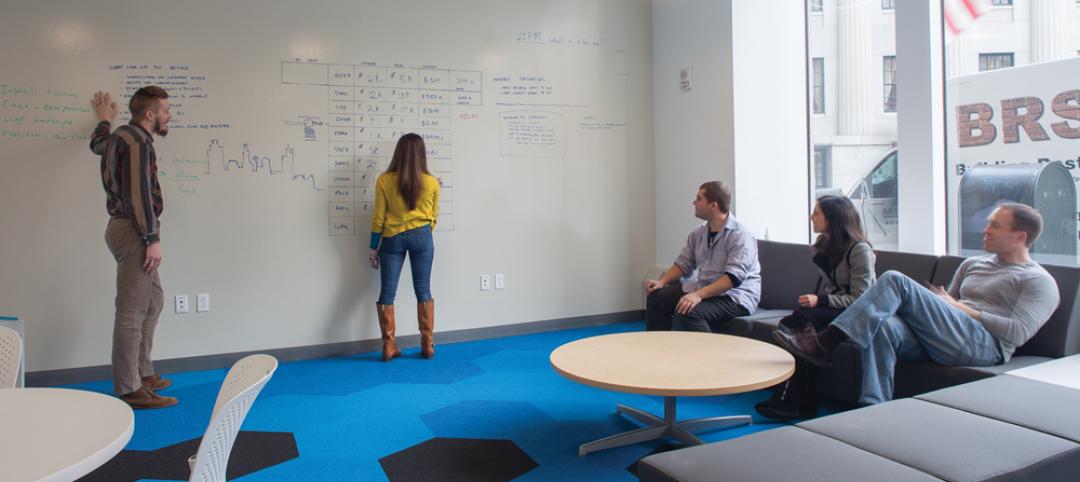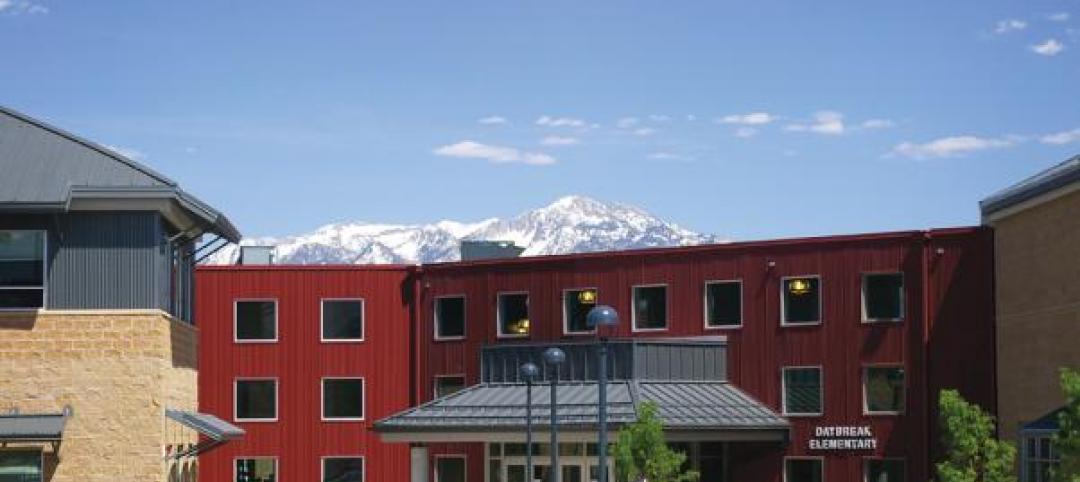The rapid pace of development of improved liquid-applied materials and finishes has given Building Teams new options. These sprayable, paintable, or “gunnable” products can add performance and sustainability benefits and reach new levels of resiliency and durability. Architectural finishes from the paints, coatings, and sealants developed with nano-enhanced substances include site- and factory-applied coatings for structural concrete, steel, metal panels, aluminum frames, and other specialty metals.
Fortified with nanoparticles, these assemblies are often stronger, more durable, more resistant to fire, and easier to clean than traditional product, according to the science blog Nanowerk (www.nanowerk.com). Some formulas with low or zero volatile organic compound (VOC) content have proven to be more resilient and stronger than their predecessors. In the case of masonry and concrete, the substances improve flowability and compacting--traits that improve the application of sealers and decorative finishes.
After reading this article, you should be able to:
- Discuss the key issues related to coating, paint, and sealant specification, including sustainability and air quality considerations.
- Describe how green standards, guide specifications and life cycle assessments, and environmental product declarations are used in the context of paint and coating selection and application.
- List typical substrates for coatings, such as concrete and metal, and the key correlated considerations for coating selection.
- Explain why in some circumstances it may be better for coatings and paints to be applied in the shop–and in some cases, why the materials might be better treated with anodizing or with no coating at all.
Take this free AIA course at BDCuniversity.com
Related Stories
| Jun 11, 2014
Koolhaas’ OMA teams with chemical company to study link between color and economy
Dutch company AkzoNobel is partnering with Rem Koolhaas' firm OMA to study how the application of colorful paints and coatings can affect a city's economic development.
| May 15, 2014
Paints, coatings, and sealants: 10 new ways to seal the deal
Color-shifting finishes, dry-erase surfaces, and stain-blocking paints are highlighted in this round up of new offerings in paints, coatings, sealants, and finishes.
| Apr 1, 2014
Paints, coatings and sealants: Choosing products and procedures for best performance
This course covers life cycle assessment, color selection, emissions, durability, resilience, corrosion resistance, specification standards, and other critical aspects of choosing coatings for interior and exterior walls, ceilings, and roofs.
Sponsored | | Mar 21, 2014
Kameleon Color paint creates color-changing, iridescent exterior for Exploration Tower at Port Canaveral
Linetec finishes Firestone’s UNA-CLAD panels, achieving a one-of-a-kind, dynamic appearance with the first use of Valspar’s new Kameleon Color
| Mar 20, 2014
Common EIFS failures, and how to prevent them
Poor workmanship, impact damage, building movement, and incompatible or unsound substrate are among the major culprits of EIFS problems.
| Mar 4, 2014
How EIFS came to America
Design experts from Hoffmann Architects offer a brief history of exterior insulation and finish systems in the U.S.
| Feb 19, 2014
AIA class: The ABCs of IMPs – How to design and build with insulated metal panels
This AIA/CES class offers insight in areas including policies and codes surrounding insulated metal panels, contributions from LEED and tax credits, energy modeling, and business development opportunities available with IMPs. Take this course and earn 1.0 AIA LU/HSW/SD.
| Jan 7, 2014
Concrete solutions: 9 innovations for a construction essential
BD+C editors offer a roundup of new products and case studies that represent the latest breakthroughs in concrete technology.
| Dec 10, 2013
16 great solutions for architects, engineers, and contractors
From a crowd-funded smart shovel to a why-didn’t-someone-do-this-sooner scheme for managing traffic in public restrooms, these ideas are noteworthy for creative problem-solving. Here are some of the most intriguing innovations the BD+C community has brought to our attention this year.
| May 14, 2013
Paints and coatings: The latest trends in sustainability
When it comes to durability, a 50-year building design ideally should include 50-year coatings. Many building products consume substantial amounts of energy, water, and petrochemicals during manufacture, but they can make up for it in the operations phase. The same should be expected from architectural coatings.


![Wet-applied coatings and finishes for commercial and institutional projects [AIA course] Wet-applied coatings and finishes for commercial and institutional projects [AIA course]](/sites/default/files/aiacourse.jpg)














